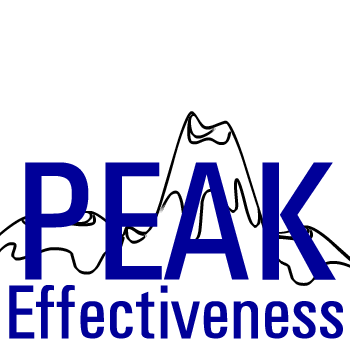






|
|
|
|
|
|
Get Engaged – At
Work and In Life!
The Four Step Sales Process
The four steps in the sales process are:
- Relating to the humanness and uniqueness of the other person with the
purpose of helping him solve a problem.
- Discovering the customer's needs, problems and possible causes of the
problems.
- Advocating a solution that will treat the cause, solve the problem and
satisfy the person's needs.
- Supporting the prospect's feeling and thinking self through the decision-making process.
Relating. The first step of relating to the customer on the net can be accomplished by relating some of the trials and tribulations you have gone through learning your craft, showing awareness of likely problems that the customer may face and setting the tone by expressing the genuine desire to help the customer solve his or her problems.
You create a buying climate where the customer is open and willing to listen by your showing good human relations. You are providing an information rich site that addresses his needs, that is easy to navigate, and fast to load.
Discovering. We can make educated guessed about what the customers' needs and problems are based on the forms of interaction mentioned above. We can communicate that understanding by saying, "Based upon what other customers have told us, ....... causes you frustration (or wastes your time. or whatever) "
We can tantalize him with questions that promise him a problem solved. We can help him discover his own needs, problems and causes. We benefit from the truth that lies within, "People buy our product not so much because they understand the product, but because they feel we understand them."
Advocating. We can then launch into advocating the solution, following the benefit path of solution - advantage - benefit. "Many of our customers have chosen to _____ because it _____ which has _______. Do you think you could use that time saved in a more fun or productive way?"
Through examples, demonstrations, and case studies, we help the customer visualize the satisfaction he will get from having the problem solved.
Supporting. Supporting the customer through the decision-making process includes assuring the customer of the proper use of information to maintain the privacy of the customer, offering guarantees, providing testimonials of how other customers have been satisfied, free trials, etc. We have to reassure him that this is a low risk decision to take whatever the next step is we want him to take.
Without being face to face where you can immediately ask the customer what you need to do to make the sale, you need some form of feedback mechanism to refine your methods.
You might consider sending a survey to people who have requested information, received several e-mails by autoresponder, but have not taken the next step to buy. Ask them, "what kept you from purchasing the _____?".
Try to find out what you need to do or not do to get better results. Then make some suggested changes and measure the results. Did it work better? There is a learning curve in every business, as you discover through experience what works and what does not. Accelerate your learning experience by listening to your customers and by trials.